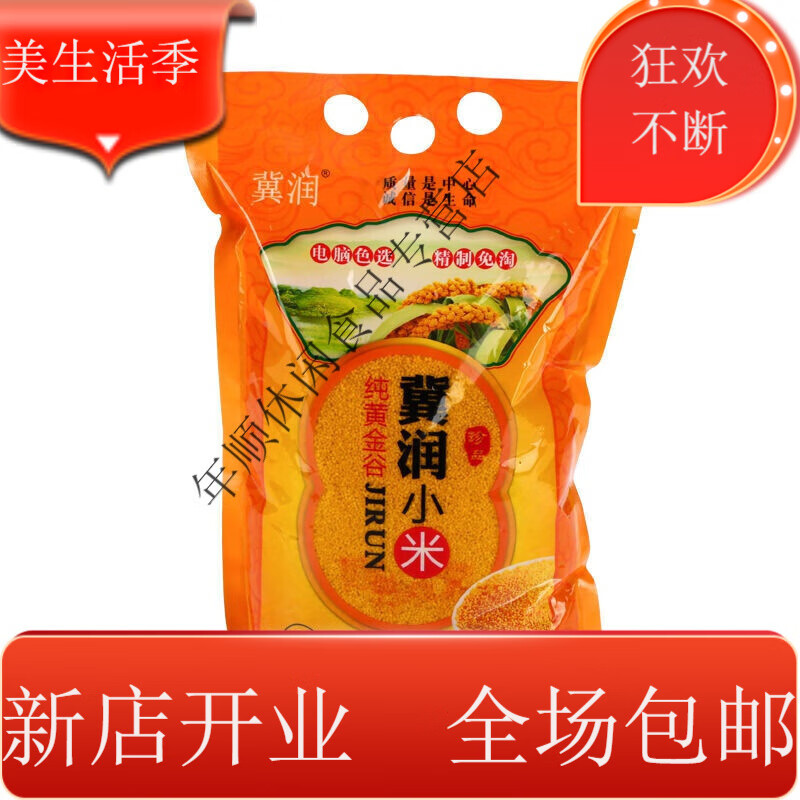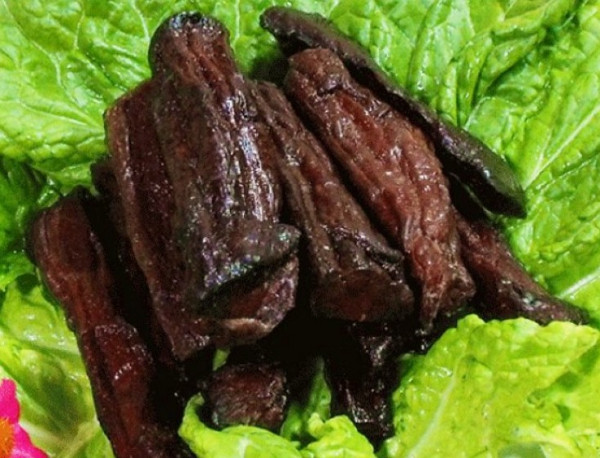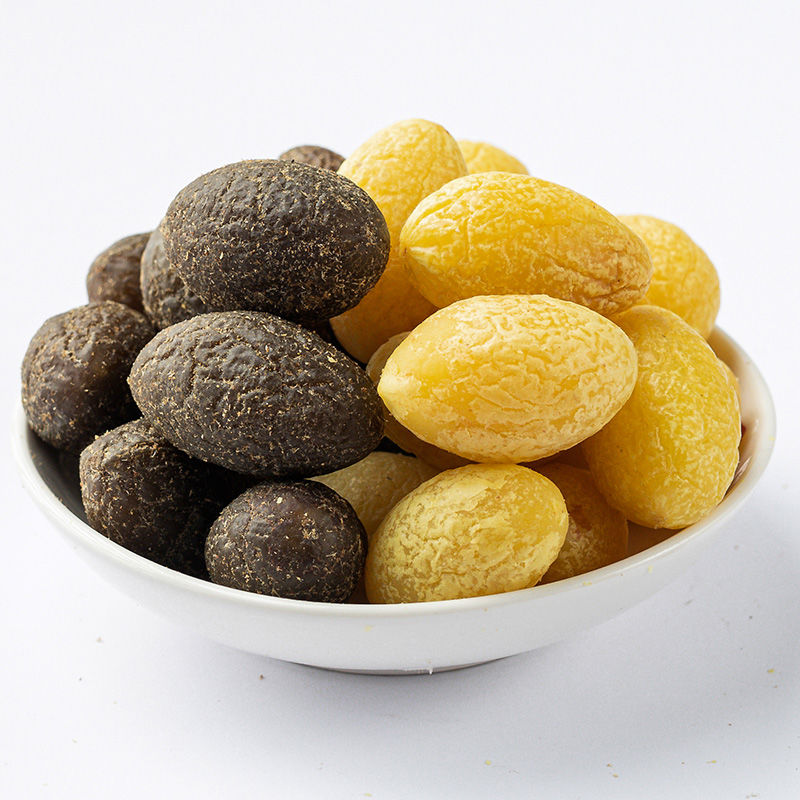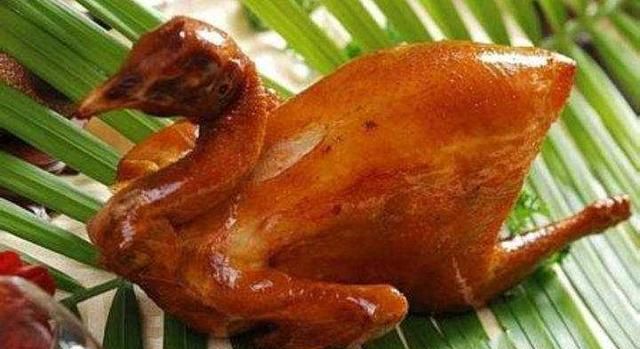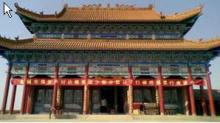一、用英语介绍一个中国食物
先用英语翻译出食物的名称,再简单的介绍一些食物来源,颜色,口感,最后再赞美一下食物
拓展:
食物是通常由碳水化合物、脂肪、蛋白质或水构成,能够藉进食或是饮用为人类或者生物提供营养或愉悦的物质总称。食物来源可以是植物、动物或者其他界的生物,例如真菌,亦或发酵产品像是酒精。人类借由采集、耕种、畜牧、狩猎、钓鱼等许多不同的方式获得食物,也可以通过人工加工生产。
介绍:
英语属于印欧语系中下的西日耳曼语支,由古代从欧洲大陆移民大不列颠岛的盎格鲁、撒克逊和朱特部落的日耳曼人所说的语言演变而来,并通过英国的殖民活动传播到世界各地。由于在历史上曾和多种民族语言接触,它的词汇从一元变为多元,语法从“多屈折”变为“少屈折”,语音也发生了规律性的变化。
二、英语介绍中国美食
Eight Cuisines(八大菜系)
China covers a large territory and has many nationalities, hence a variety of Chinese food with different but fantastic and mouthwatering flavor. Since China's local dishes have their own typical characteristics, generally, Chinese food can be roughly divided into eight regional cuisines, which has been widely accepted around. Certainly, there are many other local cuisines that are famous, such as Beijing Cuisine and Shanghai Cuisine.
Shandong Cuisine
Consisting of Jinan cuisine and Jiaodong cuisine, Shandong cuisine, clear, pure and not greasy, is characterized by its emphasis on aroma, freshness, crispness and tenderness. Shallot and garlic are usually used as seasonings so Shangdong dishes tastes pungent usually. Soups are given much emphasis in Shangdong dishes. Thin soup features clear and fresh while creamy soup looks thick and tastes strong. Jinan cuisine is adept at deep-frying, grilling, frying and stir-frying while Jiaodong division is famous for cooking seafood with fresh and light taste.
Shandong is the birthplace of many famous ancient scholars such as Confucious and Mencius. And much of Shandong cuisine's history is as old as Confucious himself, making it the oldest existing major cuisine in China. But don't expect to gain more wisdom from a fortune cookie at a Shandong restaurant in the West since fortune cookies aren't even indigenous to China.
Shandong is a large peninsula surrounded by the sea to the East and the Yellow River meandering through the center. As a result, seafood is a major component of Shandong cuisine. Shandong's most famous dish is the Sweat and Sour Carp. A truly authentic Sweet and Sour Carp must come from the Yellow River. But with the current amount of pollution in the Yellow River, you would be better off if the carp was from elsewhere. Shandong dishes are mainly quick-fried, roasted, stir-fried or deep-fried. The dishes are mainly clear, fresh and fatty, perfect with Shandong's own famous beer, Qingdao Beer
Sichuan Cuisine
Sichuan Cuisine, known often in the West as Szechuan Cuisine, is one of the most famous Chinese cuisines in the world. Characterized by its spicy and pungent flavor, Sichuan cuisine, prolific of tastes, emphasizes on the use of chili. Pepper and prickly ash also never fail to accompany, producing typical exciting tastes. Besides, garlic, ginger and fermented soybean are also used in the cooking process. Wild vegetables and animals are usually chosen as ingredients, while frying, frying without oil, pickling and braising are applied as basic cooking techniques. It cannot be said that one who does not experience Sichuan food ever reaches China.
If you eat Sichuan cuisine and find it too bland, then you are probably not eating authentic Sichuan cuisine. Chili peppers and prickly ash are used in many dishes, giving it a distinctively spicy taste, called ma in Chinese. It often leaves a slight numb sensation in the mouth. However, most peppers were brought to China from the Americas in the 18th century so you can thank global trade for much of Sichuan cuisine's excellence. Sichuan hot pots are perhaps the most famous hotpots in the world, most notably the Yuan Yang (mandarin duck) Hotpot half spicy and half clear.
Guangdong Cuisine
Cantonese food originates from Guangdong, the southernmost province in China. The majority of overseas Chinese people are from Guangdong (Canton) so Cantonese is perhaps the most widely available Chinese regional cuisine outside of China.
Cantonese are known to have an adventurous palate, able to eat many different kinds of meats and vegetables. In fact, people in Northern China often say that Cantonese people will eat anything that flies except airplanes, anything that moves on the ground except trains, and anything that moves in the water except boats. This statement is far from the truth, but Cantonese food is easily one of the most diverse and richest cuisines in China. Many vegetables originate from other parts of the world. It doesn't use much spice, bringing out the natural flavor of the vegetables and meats.
Tasting clear, light, crisp and fresh, Guangdong cuisine, familiar to Westerners, usually chooses raptors and beasts to produce originative dishes. Its basic cooking techniques include roasting, stir-frying, sauteing, deep-frying, braising, stewing and steaming. Among them steaming and stir-frying are more commonly applied to preserve the natural flavor. Guangdong chefs also pay much attention to the artistic presentation of dishes.
Fujian Cuisine
Consisting of Fuzhou Cuisine, Quanzhou Cuisine and Xiamen Cuisine, Fujian Cuisine is distinguished for its choice seafood, beautiful color and magic taste of sweet, sour, salty and savory. The most distinct features are their "pickled taste".
Jiangsu Cuisine
Jiangsu Cuisine, also called Huaiyang Cuisine, is popular in the lower reach of the Yangtze River. Aquatics as the main ingredients, it stresses the freshness of materials. Its carving techniques are delicate, of which the melon carving technique is especially well known. Cooking techniques consist of stewing, braising, roasting, simmering, etc. The flavor of Huaiyang Cuisine is light, fresh and sweet and with delicate elegance. Jiangsu cuisine is well known for its careful selection of ingredients, its meticulous preparation methodology, and its not-too-spicy, not-too-bland taste. Since the seasons vary in climate considerably in Jiangsu, the cuisine also varies throughout the year. If the flavor is strong, it isn't too heavy; if light, not too bland.
Zhejiang Cuisine
Comprising local cuisines of Hangzhou, Ningbo and Shaoxing, Zhejiang Cuisine, not greasy, wins its reputation for freshness, tenderness, softness, smoothness of its dishes with mellow fragrance. Hangzhou Cuisine is the most famous one among the three.
Hunan cuisine
Hunan cuisine consists of local Cuisines of Xiangjiang Region, Dongting Lake and Xiangxi coteau. It characterizes itself by thick and pungent flavor. Chili, pepper and shallot are usually necessaries in this division.
Anhui Cuisine
Anhui Cuisine chefs focus much more attention on the temperature in cooking and are good at braising and stewing. Often hams will be added to improve taste and sugar candy added
三、怎样用英语介绍中国的传统美食
To the Chinese, cooking is an art in itself. Chinese cuisine places emphasis on colour, aroma and flavour. Not only must a dish taste good, it must also appeal to the senses to be able to when the appetite.
先来说说烹饪技巧啊
There are countless ways to cook the same ingredients , and each way of cooking imparts its own unique flavor to the food.
蒸:steam
炒:stir-fry
炖,烩:stew
煮:boil
炸:deep fry
煎:shallow-fry
烤:bake(一般用于蛋糕),roast(一般用于肉类)
还有一种是叫做:poach,这种中文翻译是水煮,但是又不同于boil的水煮,如果你要介绍红烧鱼的话,它的做法就是这个。
再来说味道:
酸:sour
甜:sweet
苦:bitter
辣:hot/spicy
麻:西餐不会用到sichuan pepper,应该很少有麻的东西,要解释的话最好是sting,但是最好说明是吃在嘴里的感觉。
咸:salty
软:soft/tender
硬:hard
脆:crispy
接下来你要是想卖弄一番呢,就简单介绍一下八大菜系
Chinese cuisine can be divided into eight main regional branches:
Sichuan, with characteristic rich and spicy
Shandong, which is particular in its selection of ingredients for dishes.
Suzhou, its carefully presented steamed crucian carp
Guangdong, with distinctive sweet and crispy dishes.
Fujian, famed for Buddha Jumps Over the Wall(佛跳墙)
Zhejiang, which emphasises fresh food and natural flavours, particularly seafood.
Huizhou, which favous delicacies from the land and sea
Hunan, which features rich foods with strong colours like cured meats.
最后来说一下煲汤啊 (Tonics)
Besides their daily staples, the Chinese also like to use various herbal medicines to make tonic soup.
四、用英语介绍一种中国的美食
1、饺子(jiaozi 现在称dumpling?)2、白切鸡(the Soft-Boiled Chicken)3、酱板鸭(Spicy salted duck)4、刀削面(Sliced Noodles)5、重庆酸辣粉(chongqingsuanlafen)
免费试听课领取:【点击领取外教一对一免费试听课大礼包】试听完之后,还可以免费获得一次英语能力水平测试和一份详细的报告,以及公开课免费看。
很多学员表示当时也试听过很多机构的课程,觉得还是阿卡索英语性价比高,一节课才20块钱左右,他们是纯正的外籍老师,这样学到的口音就地道,有多年的培训经验作基础,口碑好,信得过。
希望可以帮到你啦!
想要找到合适英语培训机构,百度搜下“阿卡索vivi老师”即可。
百度搜下“阿卡索官网论坛”免费获取全网最齐全英语资源。
五、用英语写一篇50字左右的作文。介绍中国的特色食物(饺子)
Jiaozi(chinese Dumpling) is a traditional chinese food ,which is essention during holidays in nor thern china.Chinese dumpling becomes one of the most widely love food in china.
Chinese dumpling is one of the most important foods in chinese new year.Since the shape of chinese dumpling is similar to ancient chinese gold or silier ingots ,they symbolize wealth .
Traditional,th e members of a family get togeter to make dumplings during the New Year's Eve.They may hide a coin in one of the dumplings.
The person who finds the coin will likely have a good fortune in the New Year.Chinese dumpling is also popular in other chinese holidays or festivals,so it is part of the chinese culture or traditional.
Chinese dumpling is a delicious food.You can make avariety of chinese dumplings using different filling based on your taste and how various ingredients mixed together by you .
Making dumpling is really teamwork .Usually all family members will join the work .
Some people starte to make dupling when they were kids in the family ,so most chinese know how to make dumpling .
翻译
饺子(饺子)是中国的传统食物,在中国北方的节日里是必不可少的。饺子成为中国最受欢迎的食物之一。
中国饺子是中国新年最重要的食物之一。由于中国饺子的形状类似于中国古代的黄金或银锭,它们象征着财富。
传统的做法是,在除夕夜,家庭成员聚在一起包饺子。他们可能会在其中一个饺子里藏一枚硬币。
找到硬币的人在新的一年里可能会有好运。中国饺子在其他中国节日也很流行,因此它是中国文化或传统的一部分。
中国饺子是一种美味的食物。你可以根据自己的口味和各种配料的混合方式,用不同的馅料做各种各样的中国饺子。
做饺子真的是团队合作。通常所有的家庭成员都会参加这项工作。
有些人从小就开始做饺子,所以大多数中国人都知道如何做饺子。






